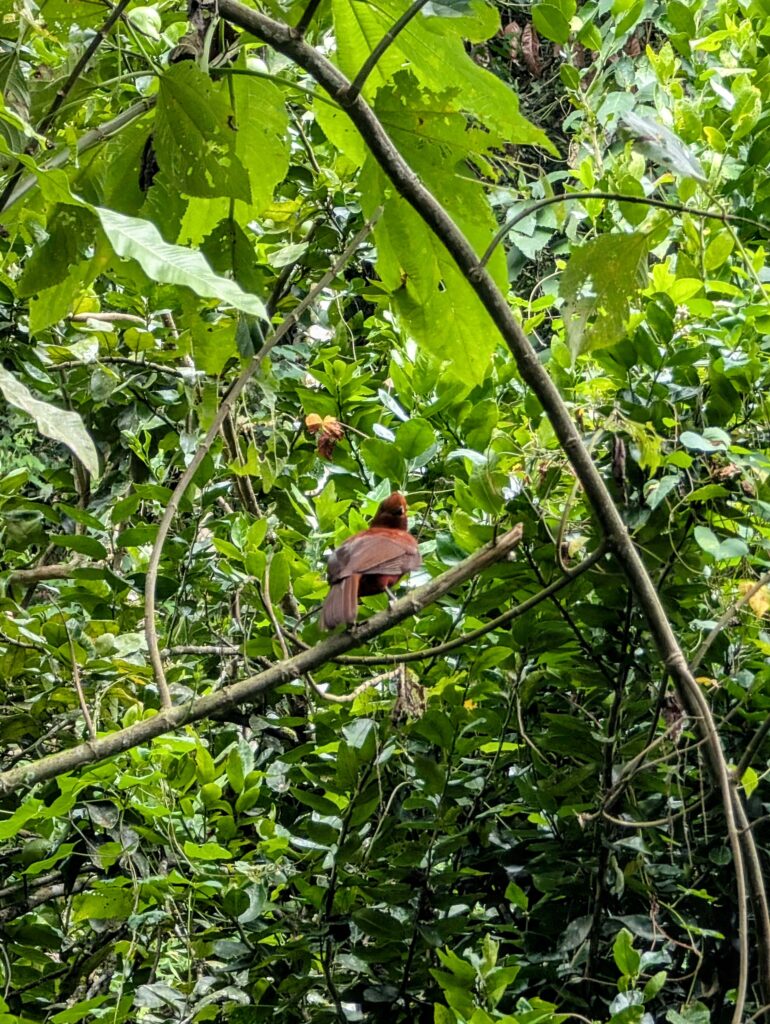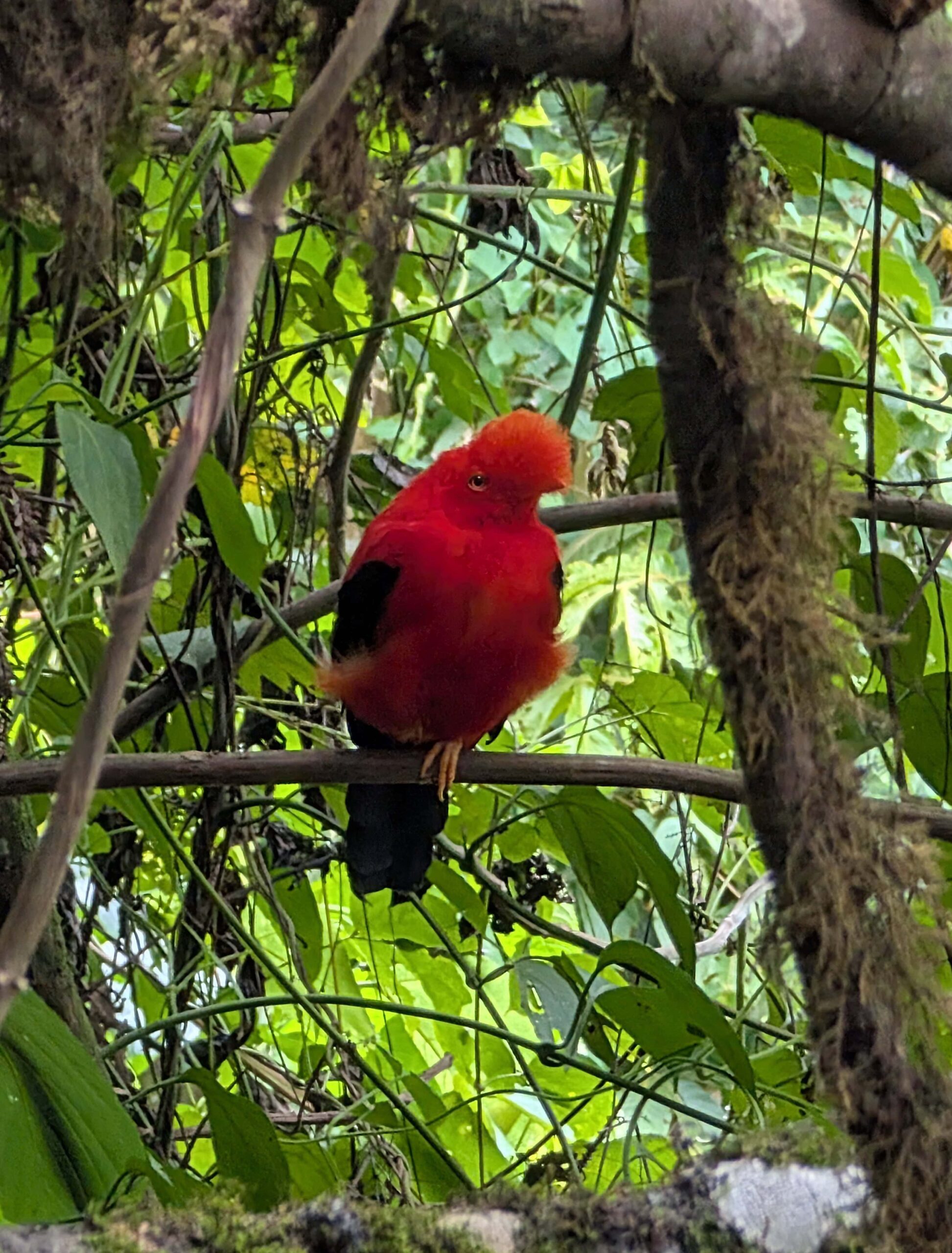Introduction
The Andean cock-of-the-rock (Rupicola peruvianus) is one of South America’s most striking birds, known for its brilliant coloration, unusual courtship displays, and cultural significance. Revered as the national bird of Peru, this unique species is an unmistakable symbol of the Andean cloud forests.
Physical Description
- Males display vivid scarlet or orange plumage, complemented by a large, fan-shaped crest that nearly covers the bill. Their wings combine black, white, and gray hues, lending a dramatic contrast to their appearance.
- Females, on the other hand, exhibit more subdued brownish-orange coloring and possess a smaller crest.

This sexual dimorphism—a marked difference in appearance between males and females—is typical of the species.
Habitat and Range
- Found from Venezuela to Bolivia, the Andean cock-of-the-rock inhabits humid, montane cloud forests of the Andes, often at elevations between 1,500-8,900ft (approximately 500-2,700m).
- Preferring rocky ravines close to streams and cliffs, these birds play a key role in Andean ecosystems.
Behavior and Courtship
One of the most captivating aspects of the Andean cock-of-the-rock is its mating display:
- Lekking Behavior: Males congregate in “leks”—shared display arenas—where they perform elaborate rituals featuring bowing, bobbing, hopping, bill snaps, and loud vocalizations to impress females.
- Nesting: After mating, the female alone builds a nest, typically on rocky cliffs or cave walls, using mud and plant material. She incubates and raises the chicks without help from the male.
Diet and Ecological Role
- Their primary diet consists of fruits and berries, but they also eat insects, small vertebrates, and amphibians when available.
- As major fruit consumers, they serve as important seed dispersers, aiding in forest regeneration by spreading seeds across their habitat.
Conservation Status
- The Andean cock-of-the-rock faces threats from habitat destruction, mainly due to deforestation and land conversion for agriculture. Nevertheless, its population is currently not considered threatened, owing to its wide range and adaptability.
Cultural Significance
- This spectacular bird is a source of local pride, folklore, and ecotourism throughout the Andes.
- Its dazzling appearance and dramatic behavior have made it an iconic ambassador for South American biodiversity, particularly in Peru, where it is nationally celebrated.
Summary Table
| Feature | Description |
|---|---|
| Scientific Name | Rupicola peruvianus |
| Status | Not threatened |
| Range | Andes (Venezuela to Bolivia) |
| Size | 30–32cm; males larger, more colorful |
| Habitat | Cloud forests, rocky gorges, near streams |
| Diet | Primarily fruit; also insects, small animals |
| Mating System | Lekking; elaborate male displays |
| Conservation Concerns | Habitat loss, disturbance at leks |
The Andean cock-of-the-rock stands out both visually and ecologically, captivating observers with its display rituals and vital role in forest ecosystems.

Leave a Reply